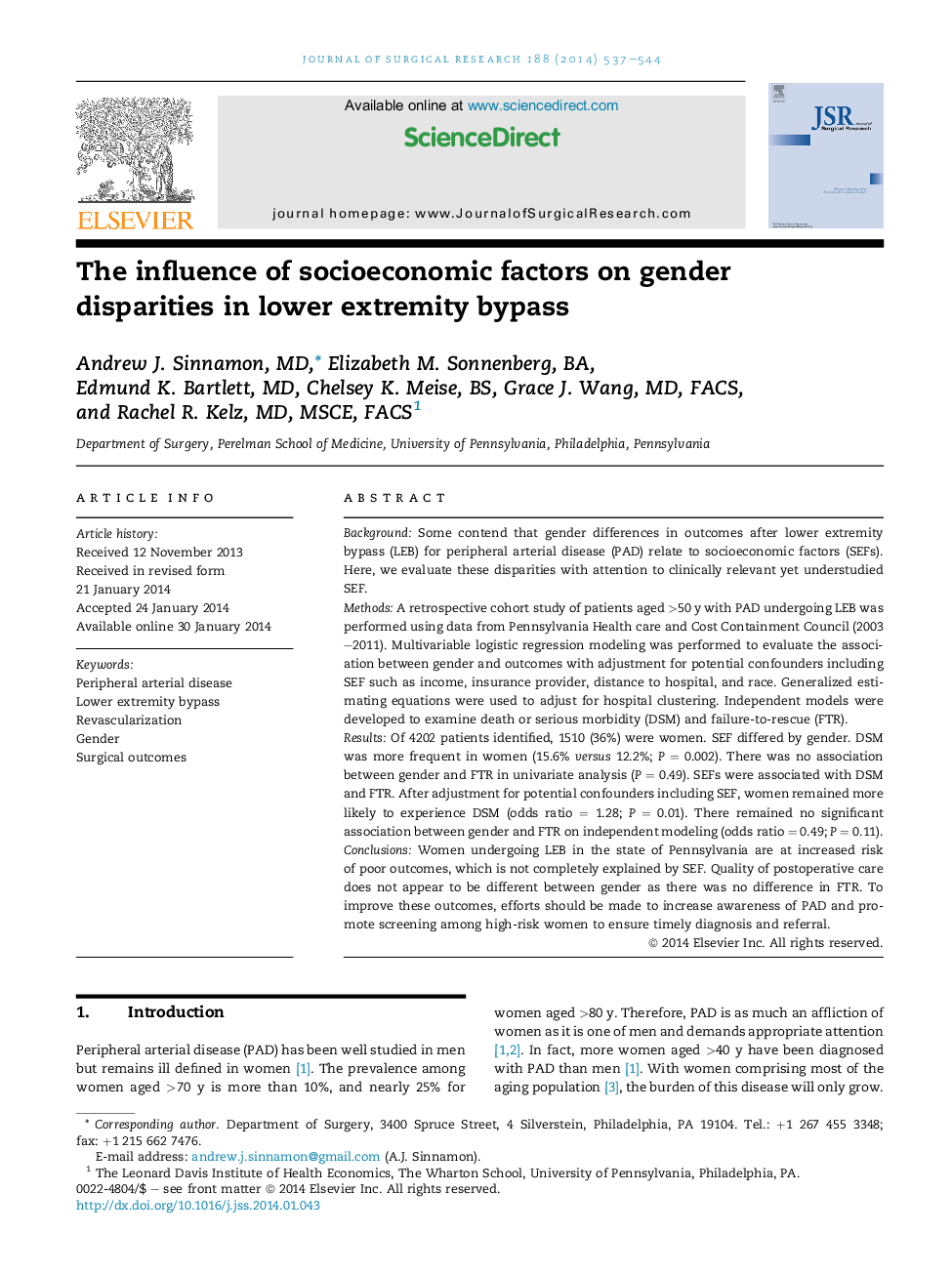| Article ID | Journal | Published Year | Pages | File Type |
|---|---|---|---|---|
| 6254056 | Journal of Surgical Research | 2014 | 8 Pages |
BackgroundSome contend that gender differences in outcomes after lower extremity bypass (LEB) for peripheral arterial disease (PAD) relate to socioeconomic factors (SEFs). Here, we evaluate these disparities with attention to clinically relevant yet understudied SEF.MethodsA retrospective cohort study of patients aged >50 y with PAD undergoing LEB was performed using data from Pennsylvania Health care and Cost Containment Council (2003-2011). Multivariable logistic regression modeling was performed to evaluate the association between gender and outcomes with adjustment for potential confounders including SEF such as income, insurance provider, distance to hospital, and race. Generalized estimating equations were used to adjust for hospital clustering. Independent models were developed to examine death or serious morbidity (DSM) and failure-to-rescue (FTR).ResultsOf 4202 patients identified, 1510 (36%) were women. SEF differed by gender. DSM was more frequent in women (15.6% versus 12.2%; P = 0.002). There was no association between gender and FTR in univariate analysis (P = 0.49). SEFs were associated with DSM and FTR. After adjustment for potential confounders including SEF, women remained more likely to experience DSM (odds ratio = 1.28; P = 0.01). There remained no significant association between gender and FTR on independent modeling (odds ratio = 0.49; P = 0.11).ConclusionsWomen undergoing LEB in the state of Pennsylvania are at increased risk of poor outcomes, which is not completely explained by SEF. Quality of postoperative care does not appear to be different between gender as there was no difference in FTR. To improve these outcomes, efforts should be made to increase awareness of PAD and promote screening among high-risk women to ensure timely diagnosis and referral.
